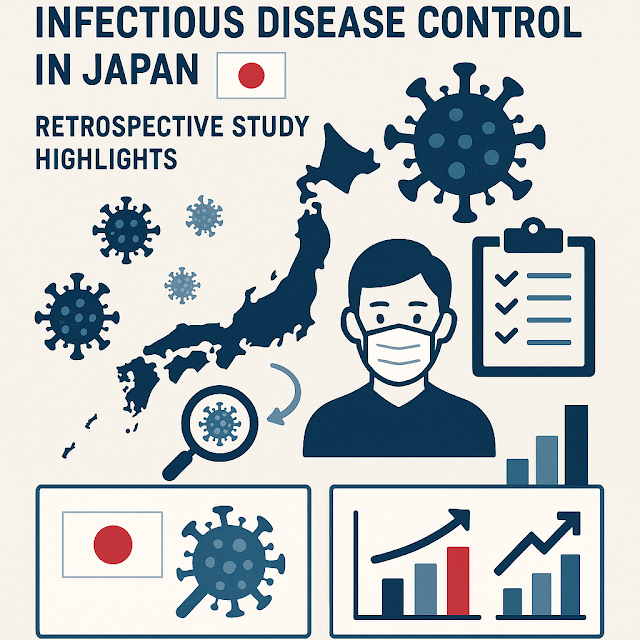
INTRODUCTION
The global COVID-19 pandemic triggered unprecedented changes in hospital infection control practices, yet its concrete impact remains partially understood. Particularly in healthcare settings, where hand hygiene and antimicrobial stewardship are essential, it was critical to evaluate how these measures evolved during the pandemic and whether they effectively curbed infections. This retrospective multicenter study, conducted across four Japanese hospitals, aimed to measure the tangible effects of COVID-19 on infection control. Using data from April 2015 to March 2023, the study provides a comparative analysis between the pre-COVID-19 and COVID-19 periods. The research sought to clarify whether intensified infection control strategies led to reductions in multidrug-resistant organisms (MDROs) and bloodstream infections, or if unintended consequences arose due to misuse or overuse of preventive interventions. With infection control being a cornerstone of patient safety, the study fills a critical knowledge gap by highlighting persistent challenges and proposing targeted strategies for future outbreaks.
HAND HYGIENE PRACTICES IN THE PANDEMIC ERA
Hand hygiene remains one of the most cost-effective and widely promoted infection control measures. During the COVID-19 pandemic, a significant rise in hand sanitizer usage per inpatient was observed, reflecting heightened awareness and institutional efforts to prevent viral transmission. However, the study found that this increase did not lead to a corresponding drop in MDRO infection rates. This discrepancy may point to improper technique, timing, or inconsistent application of hand hygiene protocols. It underscores the critical importance of not just promoting hand hygiene but also ensuring its correct and consistent implementation. In times of public health emergencies, visual compliance may increase, but functional compliance—ensuring hand hygiene is done properly—remains vital to actual infection prevention. The findings call for renewed emphasis on qualitative hand hygiene education.
BROAD-SPECTRUM ANTIMICROBIAL USE AND ITS CONSEQUENCES
One of the most prominent shifts during the pandemic was the increase in broad-spectrum antimicrobial prescriptions. This response, possibly driven by diagnostic uncertainty and the urgency to treat suspected secondary bacterial infections, may have inadvertently compromised antimicrobial stewardship efforts. Overuse of broad-spectrum agents is a known risk factor for the emergence and persistence of MDROs. Despite increased antimicrobial usage, MDRO infection rates did not decline, suggesting that these interventions may not have been appropriately targeted. The study raises concerns about the long-term implications of pandemic-induced prescribing behaviors and calls for the reestablishment of tight antimicrobial control even in crisis periods.
BLOOD CULTURE CONTAMINATION AND INFECTION REPORTING
The study found a notable increase in the number of positive blood cultures during the COVID-19 period. While this could be interpreted as a rise in infections, the steady rate of MDROs suggests otherwise. Instead, it indicates a likely increase in blood culture contamination, possibly due to hurried sampling procedures, overburdened staff, or lapses in standard aseptic technique. These findings emphasize the importance of maintaining rigorous training and oversight on sample collection protocols, especially when healthcare systems are under stress. Accurate reporting and diagnosis are fundamental to infection control, and contamination can obscure true infection rates and lead to unnecessary treatment.
ROLE OF INFECTION CONTROL TEAMS DURING CRISES
The pandemic has highlighted the indispensable role of infection control teams (ICTs) in hospitals. Their duties extend beyond surveillance to include education, protocol development, and frontline support during outbreaks. This study illustrates that even with increased hygiene measures, the efficacy of infection control depends largely on the quality of implementation—something ICTs are uniquely positioned to manage. Strengthening ICT capacity, ensuring they are well-resourced, and integrating them more closely with antimicrobial stewardship teams can greatly enhance response strategies during future public health emergencies.
FUTURE DIRECTIONS FOR INFECTION CONTROL STRATEGIES
The lessons from this study point to several actionable priorities: continuous surveillance of antimicrobial use, improved hand hygiene training, better blood culture protocols, and stronger infection control team engagement. As pandemics like COVID-19 exert immense pressure on healthcare systems, it becomes vital to balance urgency with evidence-based practice. Future infection control strategies must be robust, flexible, and supported by real-time data analytics. Moreover, systems should be in place to prevent overreliance on antimicrobials and ensure quality in basic preventive practices like hand hygiene. Research such as this sets the foundation for building more resilient, adaptive infection control frameworks globally.
🎖️ Nominate Now: https://infectious-diseases-conferences.pencis.com/award-nomination/?ecategory=Awards&rcategory=Awardee
📝 Registration Page: https://infectious-diseases-conferences.pencis.com/award-registration/
📧 Contact us: infectioussupport@pencis.com
Hashtags
#COVID19Impact, #InfectionControl, #HandHygiene, #AntimicrobialStewardship, #MDRO, #BloodCulture, #HospitalInfections, #PandemicResponse, #HealthcareResearch, #InfectiousDiseases, #JapaneseHealthcare, #BroadSpectrumAntibiotics, #ICPractices, #HospitalSafety, #PublicHealthStudy, #COVID19Lessons, #MicrobialResistance, #HealthcareQuality, #InfectionPrevention, #HospitalEpidemiology,



No comments:
Post a Comment